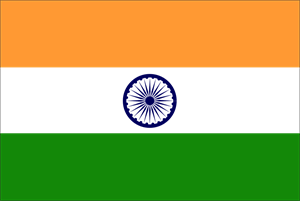OTRĀ SEMESTRA NOSLĒGUMA TESTI
Read the information, listen and learn or repeat words and expressions about India.
(Lasi, klausies un iemācies vai atkārto vārdus par Indiju!)

- India
India, country that occupies the greater part of South Asia situated in Indian Peninsula. Its government is a constitutional republic that represents a highly diverse population consisting of thousands of ethnic groups and likely hundreds of languages. With roughly one-sixth of the world’s total population, India is the second most populous country, after China.
It is known from archaeological evidence that a highly sophisticated urbanized culture — the Indus civilization — dominated the northwestern part of the subcontinent from about 2600 to 2000 BCE. From that period on, India functioned as a virtually self-contained political and cultural arena, which gave rise to a distinctive tradition that was associated primarily with Hinduism, the roots of which can largely be traced to the Indus civilization. Other religions, notably Buddhism and Jainism, originated in India—though their presence there is now quite small — and throughout the centuries residents of the subcontinent developed a rich intellectual life in such fields as mathematics, astronomy, architecture, literature, music, and the fine arts.
Direct administration by the British, which began in 1858, effected a political and economic unification of the subcontinent. When British rule came to an end in 1947, the subcontinent was partitioned along religious lines into two separate countries — India, with a majority of Hindus, and Pakistan, with a majority of Muslims.
India — [ˈɪn.di.ə] — Indija
Indian peninsula — [ˈɪn.di.ən ˌpəˈnɪn.sjə.lə] — Indijas pussala
- The flag of India
The National Flag of India is a horizontal rectangular tricolour of orange, white and green; with a 24-spoke wheel, in navy blue at its centre. It was adopted in its present form during a meeting of the Constituent Assembly held on 22 July 1947, and it became the official flag of the Dominion of India on 15 August 1947. In India, the term "tricolour" almost always refers to the Indian national flag.

the flag of India — [ˌflæɡ ˌəvˈɪn.di.ə] — Indijas karogs
Tricolour — [ˈtrɪk.əl.ər] — trīskrāsainais karogs
- New Delhi
New Delhi is the capital of India, built in the 20th century just south of the historic hub of Old Delhi to serve as India’s administrative centre. It is situated in the northern part of India.

New Delhi — [ˌnjuːˈdel.i] — Deli
- Languages
There are two official languages in India. Hindi, with the largest number of speakers, is the official language of the government. English is used extensively in business and administration and has the status of a "subsidiary official language". It is important in education, especially as a medium of higher education. Each state and union territory has one or more official languages, and the constitution recognises in particular 22 "scheduled languages".
Hindi — [ˈhɪn.di] — hindi valoda
- People
Indians are the nationals and citizens of India, the second most populous nation in the world, containing 17.50% of the world's population. The term "Indian" refers to nationality, rather than a particular ethnicity or language. The Indian nationality consists of dozens of regional ethno-linguistic groups, reflecting the rich and complex history of the country.
Indian — [ˈɪn.di.ən] — indietis, indiete
Atsauce:
https://www.india.gov.in/
https://www.britannica.com/place/India